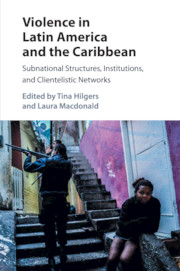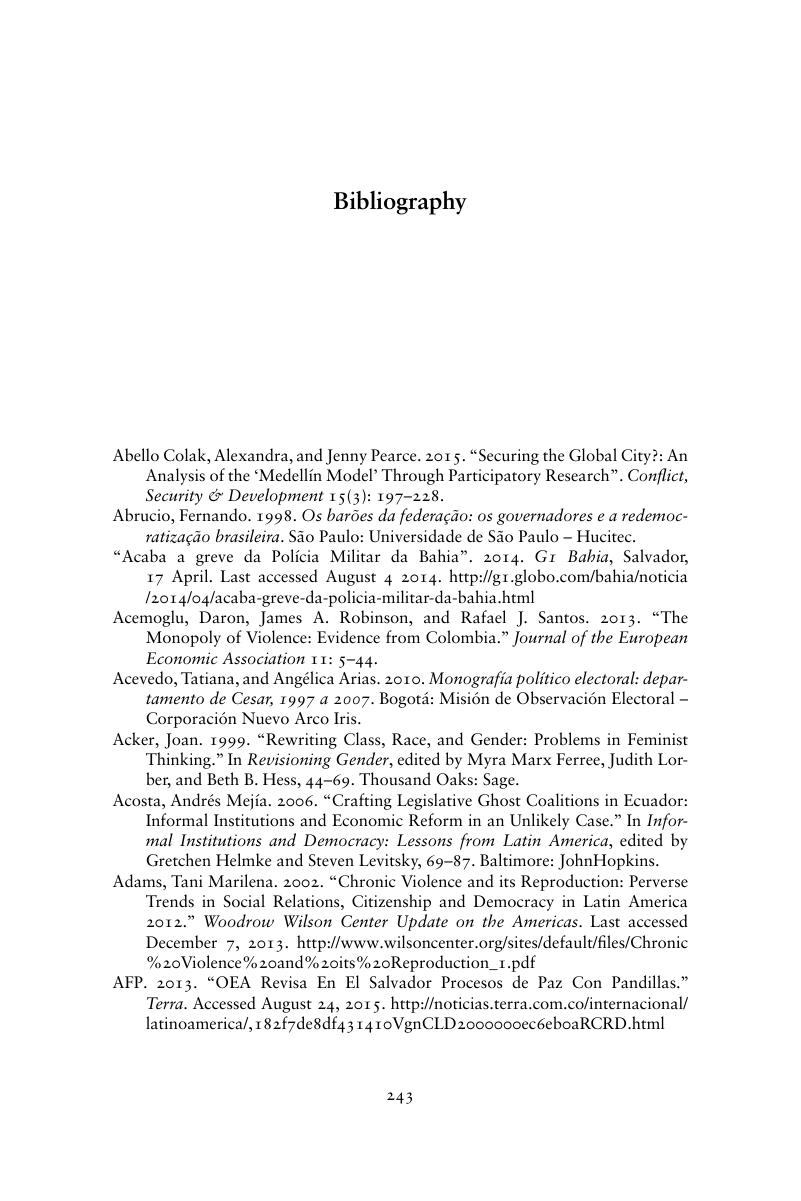 Violence in Latin America and the Caribbean
Violence in Latin America and the Caribbean Book contents
- Violence in Latin America and the Caribbean
- Violence in Latin America and the Caribbean
- Copyright page
- Contents
- Figures and Tables
- Contributors
- Acknowledgments
- Introduction
- Part I Methodology
- Part II Urban Violence and Clientelism
- 3 Of Criminal Factions, UPPs, and Militias
- 4 The Garrison Community in Kingston and Its Implications for Violence, Policing, De Facto Rights, and Security in Jamaica
- 5 The Salvadoran Gang Truce (2012–2014)
- 6 Guns and Butter
- Part III Regional Violence and Clientelism
- 8 Agricultural Boom, Subnational Mobilization, and Variations of Violence in Argentina
- 9 Patterns of Violence and the Dead Ends of Democratization in Subnational Argentina
- 10 Clientelism and State Violence in Subnational Democratic Consolidation in Bahia, Brazil1
- Conclusion
- Bibliography
- Index
- References
Bibliography
Published online by Cambridge University Press: 14 September 2017
- Violence in Latin America and the Caribbean
- Violence in Latin America and the Caribbean
- Copyright page
- Contents
- Figures and Tables
- Contributors
- Acknowledgments
- Introduction
- Part I Methodology
- Part II Urban Violence and Clientelism
- 3 Of Criminal Factions, UPPs, and Militias
- 4 The Garrison Community in Kingston and Its Implications for Violence, Policing, De Facto Rights, and Security in Jamaica
- 5 The Salvadoran Gang Truce (2012–2014)
- 6 Guns and Butter
- Part III Regional Violence and Clientelism
- 8 Agricultural Boom, Subnational Mobilization, and Variations of Violence in Argentina
- 9 Patterns of Violence and the Dead Ends of Democratization in Subnational Argentina
- 10 Clientelism and State Violence in Subnational Democratic Consolidation in Bahia, Brazil1
- Conclusion
- Bibliography
- Index
- References
Summary

- Type
- Chapter
- Information
- Violence in Latin America and the CaribbeanSubnational Structures, Institutions, and Clientelistic Networks, pp. 243 - 282Publisher: Cambridge University PressPrint publication year: 2017


